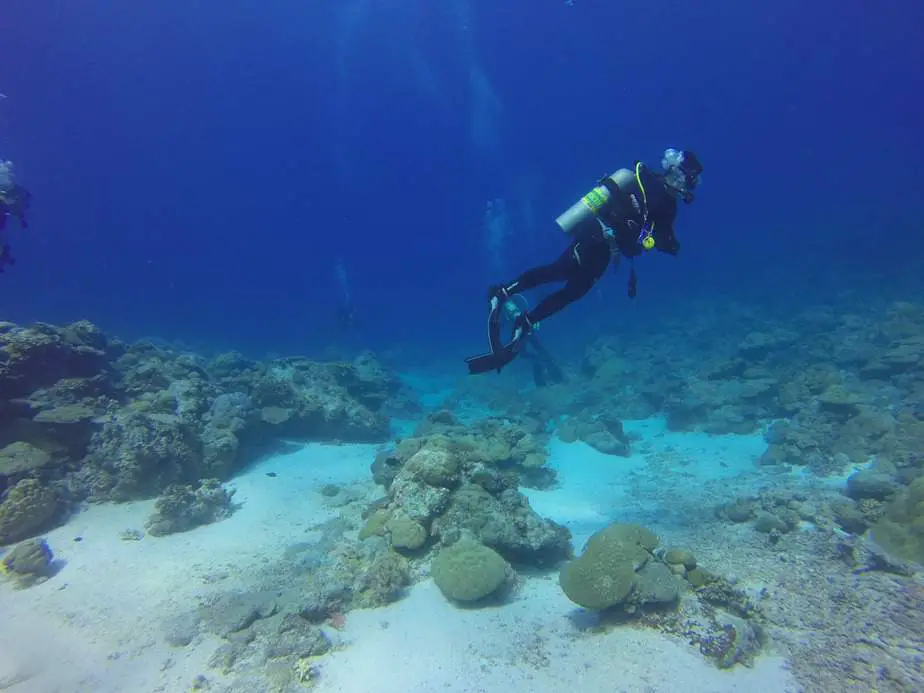In the Open Water Diver course, you learn all about no-decompression limit (NDL) diving. Basically, the NDL is the amount of time you can stay underwater and surface without performing any decompression stops. Decompression dives are dives that exceed the NDL and require a series of stops before reaching the surface. You require additional training in order to safely perform decompression dives, so if you’re just starting out, stay within your NDL.
No matter what kind of diving you’re doing, you should perform a safety stop at 3-5 m for 3 minutes, however this is not a decompression stop. The purpose of a stop is to give your body some time to off-gas, i.e. to safely release some of the excess nitrogen in your system from breathing compressed air. If you fail to perform a safety stop on a no-decompression dive, or fail to perform the required deco stops and safety stop on a decompression dive, then you put yourself at risk of decompression sickness (the bends).
What type of stops there are and when to do them
For any given dive, you should at least do a 3-minute safety stop at a depth of 3-5 m. For longer dives that exceed the NDL, i.e. a decompression dive, you will need to make several decompression stops and a half stop.
Divers with only their Open Water certification are not adequately trained for decompression diving. The reason why it’s not taught yet is that deep dives with long bottom times and deco stops require more air than what the standard scuba cylinders used for recreational diving training can provide.
The maximum depth limit allowed by the Open Water certification and the capacity of standard scuba cylinders act as a limiter so that inexperienced divers will be less likely to exceed their NDL.
Decompression diving requires mandatory stops at various depths (the exact depths are calculated by your dive computer or with a dive table), and the total time you must wait at these depths can reach up to 15 minutes. There can be multiple decompression stops, and the amount as well as the depths which they are to be done are calculated based on time spent at depth, ascent rate, what kind of breathing gas was used, etc.
Scuba diving organizations like PADI teach the concept of a half-stop for all dives over 30 m (100 ft). A half stop is like a safety stop but done at half the maximum depth of the current dive for 1 minute. So if your maximum depth was 30 m, then on the ascent you would stop at 15 m for 1 minute, then do another safety stop at 3-5 m for 3 minutes.
The point of all of these stops at various depths is to give your body time to release the excess nitrogen absorbed by your body when breathing compressed gas under high pressure.
Technically, divers who have stayed within their NDL are not required to perform any kind of stop before they surface. However, a general rule divers follow is to assume every dive is a decompression dive. That means that even for a NDL dive, you should still at least perform a safety stop prior to surfacing.
This reason is that even if you stay under your NDL it doesn’t mean that you are completely immune to the effects of decompression sickness. On all dives, some amount of excess nitrogen has entered your bloodstream that should be off-gassed. It may be minuscule, but it can lead to trouble, so just do a safety stop every dive. It’s very easy to do and doesn’t take much time out of your day, but it can drastically reduce your chances of getting the bends.
What is a decompression stop?
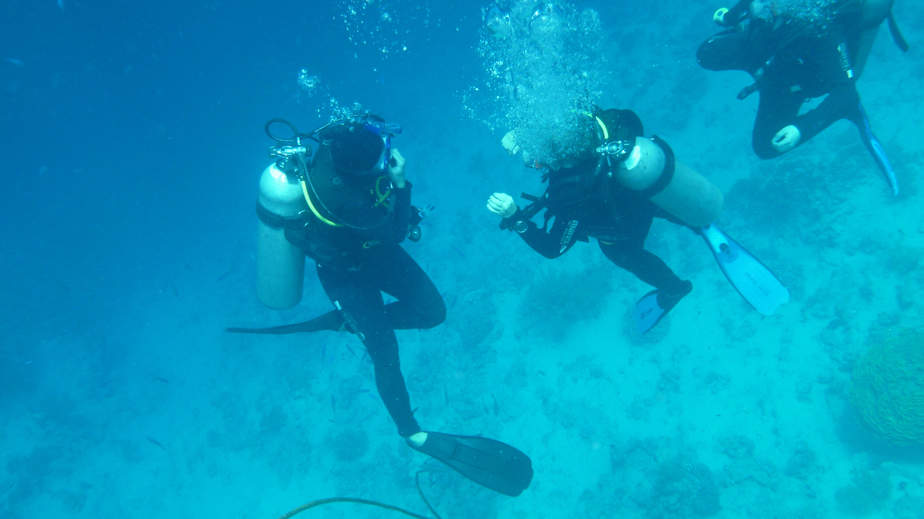
As briefly mentioned above, decompression stops are a series for stops a diver who has exceeded their NDL must perform during the ascent. It effectively is a waiting period to allow your body to release enough nitrogen (or helium) so that you can surface without getting bent. Multiple stops are needed at various depths so your body can acclimate to the pressure as you get closer to the surface.
The length of the waiting period and what depth a deco stop is to be performed at depends on your dive profile. Your bottom time and maximum depth reached affects the time required for your body to reduce inert gasses dissolved in your system.
You can use a dive computer to help you determine your deco stops, or you can manually calculate them yourself using dive tables. Nowadays, divers just use the dive computer to do this tedious task. However, you should still know how to do it manually so that you can tell when the numbers the dive computer gives you are completely wrong.
Some traditional divers have a distrust for dive computers because they don’t like to relinquish their safety to a computer. A good analogy is that most people probably wouldn’t trust a self-driving vehicle to safely take them to their destination; they’d want to have their hands on the wheel at all times.
However, there is a major downside to using decompression tables is that it cannot account for the unexpected. What happens if you accidentally stay underwater longer than you intended or dove deeper than intended whether it was by accident or due to some other factor? Suddenly your deco stop calculations are off and you are at risk of getting bent.
The benefit of letting a dive computer calculate your deco stops is that it’s calculating that information in real-time. It’s constantly tracking your information and building up an accurate dive profile. If something unexpected happens, dive computers are flexible enough to account for that in their calculations and to provide you with updated deco stop information.
Should I do decompression dives?
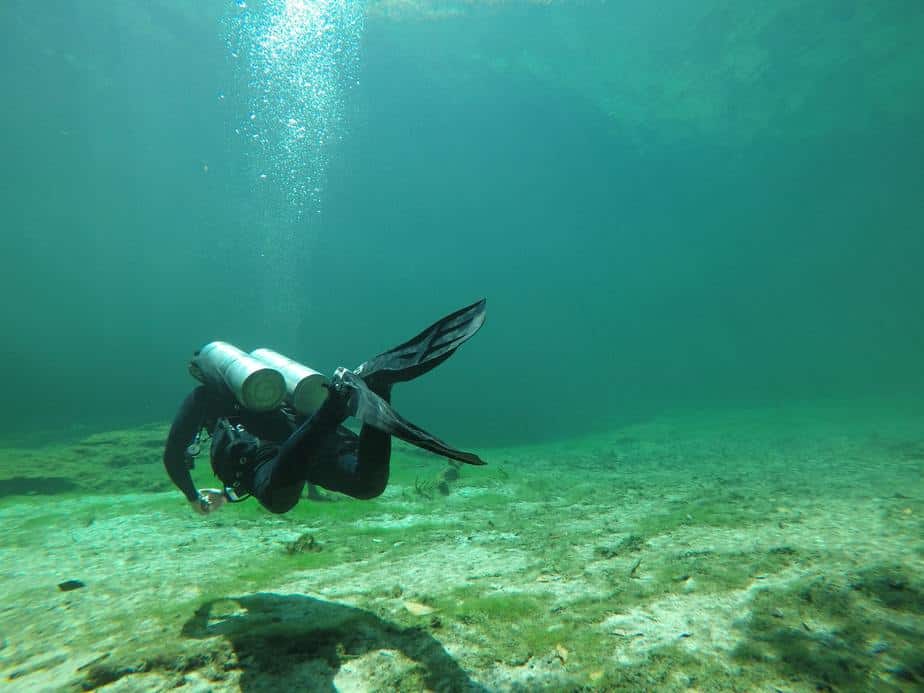
You cannot just suddenly decide to do a decompression dive. First of all, it requires additional training that you might not have gone through yet. Second, all dives should be planned dives. If you are in the middle of a no-stop dive, do not suddenly change your mind and do a deco dive. If you were certified to do it in the first place, you’d know that this is a big no-no.
There are various reasons why deco stops require more training. For one, adding deco stops to a dive changes how long it takes for you to ascend to the surface. As we mentioned, you might have to wait as long as 15 minutes. That means you need to have that much air left in the tank so you can wait it out comfortably.
Since Open Water divers are taught to head to the surface relatively quickly, they now need to take this into account when planning their dive. Occasionally, a diver underestimates how long they have to wait and realizes that they are almost out of breathing gas while they are still in the middle of decompressing. This is not optimal and you will have to rely on your dive buddy to provide the air you need. Some boats provide regulators near the surface to provide emergency air just for this kind of situation.
Another reason why deco dives need more training is that deco dives generally require multiple tanks and other gas mixes than just standard air. The dives are also done at deep depths. In order to handle all of this, divers need to learn about technical diving.
What to do in the event of a decompression violation
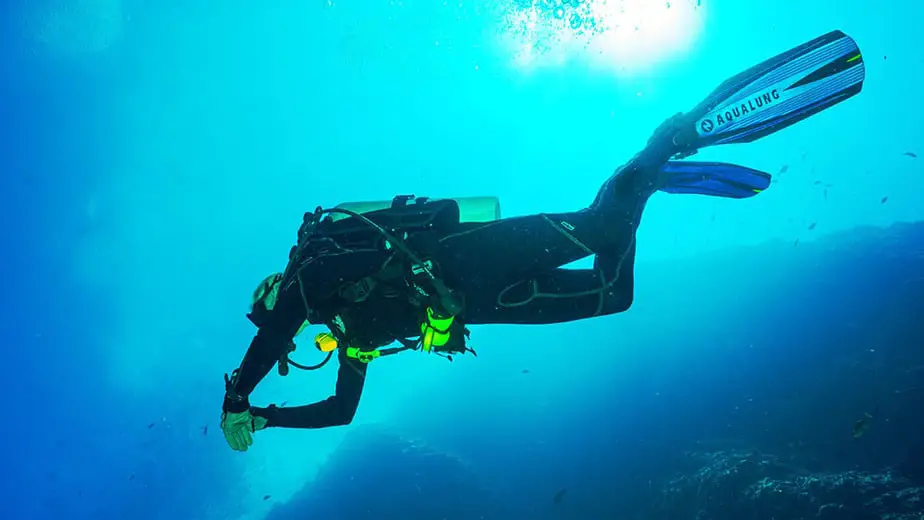
If you’re diving with a dive computer and it starts to beep and flash about a decompression violation, then you should descend back to the deco stop depth and wait it out like originally planned. This is assuming that you have enough air remaining to do your required deco stops. If you don’t, stay calm and communicate to your dive buddy that you’re low on air and need to share some air
When you do a decompression violation (i.e. fail to wait out the full duration of a stop or miss stops completely) then your dive computer will penalize you for it. Some are pretty extreme; they’ll lock you out for 24-48 hours (looking at you Suunto) which means you’re out of a dive computer and can’t dive anymore.
You can get around this by using a dive watch with a depth gauge and manually calculating your own deco stops, however this goes against the spirit of what the dive computer is trying to do which is to prevent decompression sickness.
Other dive computers will penalize you by drastically reducing the NDL on your next dive and forcing you to do multiple deco stops unless you had a lengthy surface interval to off-gas. The reason why dive computers are forcing you to have a long surface interval is because the excess nitrogen in your body hasn’t been released to safe levels. If you attempt another dive, you are just absorbing even more nitrogen into your system and all but guaranteeing you will get bent.
Decompression violations are very serious, and you should always try to do all of your deco stops at the exact depth for the specified amount of time.
PADI Emergency Deco Protocols
PADI has developed some guidelines for divers that accidentally exceeded their NDL and aren’t sure how they should decompress. Their recommendations are:
- If you exceed your NDL by up to 5 minutes, then make an 8 minute deco stop at 3 m (instead of the usual 3). After that, have a surface interval of at least 6 hours before you dive again on the same day.
- If you exceed your NDL by more than 5 minutes, then make a 15 minute stop at 3 m and do not dive for at least 24 hours.
Sometimes divers can accidentally exceed their NDL and find themselves in a decompression dive. This is not optimal, but following the guidelines above, you can reduce your chances of getting decompression sickness.
How to practice decompression diving
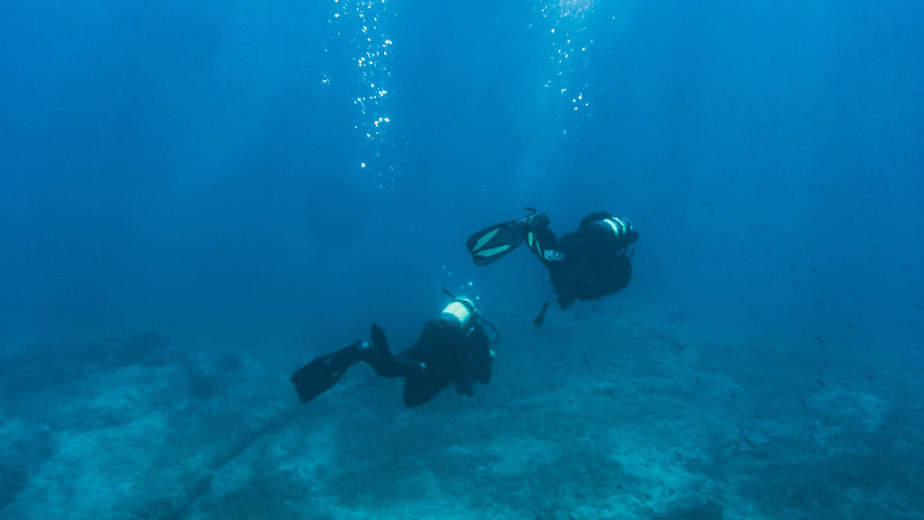
If you want to get some hands-on experience with decompression diving before taking the PADI Tec 40 course (the introductory course for decompression diving), there’s a way you can do it without breaking any rules or jeopardizing your safety. What we’re about to recommend, make sure you stay within your depth limit and play it safe. Bring a mini-scuba tank with you just in case.
First, you need two dive computers. Preferably one of them should have a conservative algorithm for shorter bottom times (Suunto dive computers are notorious for this). If you already have two computers because you have a back-up dive computer then that is very fortunate.
Set the conversative dive computer to a “very conservative” setting. This ensures you have the shortest bottom time possible. The second dive computer should be left on “normal” settings. When diving with the two dive computers configured this way, naturally the conservative dive computer will reach decompression mode first.
What you can do now is do a “mock” decompression dive by pretending that this dive computer was your real dive computer (but in reality, you’re following the recommendations of the “normal” dive computer).
The “normal” dive computer acts as a baseline; you should take the information it displays very seriously and follow that over the conservative dive computer. The conservative dive computer will tell you to do some deco stops which you can now practice following. Adhere to the recommendations as if it were the real thing.
Any time you go out for a dive, particularly if you’re trying out something new, you should always do so under the supervision of a dive buddy or a dive professional such as a divemaster or instructor. This will ensure that you can get bailed out if you find yourself in an emergency. You can also ask them for advice.

